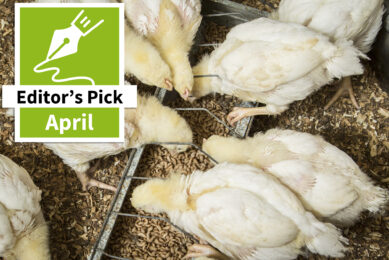Salmonella risk increases after cage ban
Egg producers in the European Union may struggle to control Salmonella when the EU ban on battery cages comes into force in January 2012, according to Anitox Corporation, specialist in pathogen elimination, mould control and milling efficiency programmes for the feed milling and primary meat, egg and fish production industries.
Alan Doyle, Anitox’ European Business Development Manager, emphasises that despite data published by the European Food Safety Authority (EFSA) in 2011 showing that Salmonella control programmes in laying birds have been highly successful the industry simply cannot afford to be complacent.
The data show that 17 Member States met their 2009 reduction target for flocks of laying hens. The overall incidence of Salmonella in countries which operate control programmes fell from 3.5% in 2008 to 3.2% in 2009.
Doyle says that “The need for caution was highlighted a recent study in Belgium to quantify the effects of housing systems on the spread of Salmonella infection within layers and internal egg contamination.
“The study found that, compared with traditional battery cages and furnished cages, aviary and floor housing systems pose a greater risk. Bird-to-bird transmission of Salmonella enteritidis was slightly higher, while a higher number of eggs were contaminated internally by Salmonella.
“The results suggest that a shift from conventional to alternative housing systems for laying hens should be accompanied by a keen concern for optimising Salmonella surveillance programmes.
“It is critical, therefore, that existing control plans are maintained and additional care is taken to minimise within-flock transmission of Salmonella, which is a persistent problem that cannot be entirely eradicated and poses a major threat to humans who consume contaminated animal products,” he said.
Heat treatment not always works
EFSA identified Salmonella spp. as the major hazard for microbial contamination of feed and although feedstuffs for layer, broiler, duck or turkey parent/grandparent stock are sometimes heat-treated in an attempt to reduce the problem, this process may not kill all pathogens.
It also significantly increases the cost of the feed, has a high carbon footprint, can damage vitamins/nutrients and has no residual effect, so unless other measures are implemented, re-contamination can occur in the mill, during transport or on the farm.
In another recent study, the authors found that non-pelleted feed e.g. mash, was eight times more likely to be contaminated (with Salmonella) than pelleted compound feed.
Formaldehyde alternative
A formaldehyde-based feed treatment was found by EFSA to provide a viable alternative to heat-treatment, both initially and, crucially, in preventing recontamination of feed.
DEFRA-funded (UK) research which investigated the treatment of animal feeds with various organic acids and formaldehyde-based products also identified large variations in efficacy and effects in masking the presence of Salmonella during culture.
The treatment which gave by far the best ‘kill’ of Salmonella in feed was a liquid antimicrobial bactericide containing 33% formaldehyde, propionic acid and natural terpenes, a formula identical to Anitox Termin-8, which sits within the European Biocide Regulations.
It provides effective control of both gram-negative bacteria such as Salmonella and E.coli, together with gram-positive bacteria such as Staphylococcus and Streptococcus.
Termin-8 also controls spore-forming bacteria such as Clostridium in feeds/feed ingredients, whilst exhibiting residual activity that protects against recontamination for up to 60 days.
“Greater consumer awareness of food safety issues is translating into increasing demand from livestock producers, feed compounders and food processors all over the world for products which improve safety throughout the supply chain,” Doyle states.
“The Termin-8 pathogen control programme for finished feed and raw materials is increasingly popular and each year more than 25 million tonnes of feed and raw materials are treated with it to ensure that they are pathogen-free.”
Join 26,000+ subscribers
Subscribe to our newsletter to stay updated about all the need-to-know content in the feed sector, three times a week. Beheer
Beheer









 WP Admin
WP Admin  Bewerk bericht
Bewerk bericht